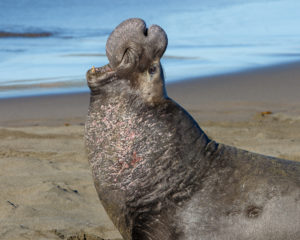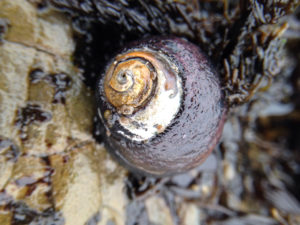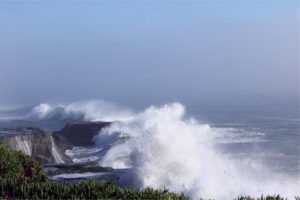If you go by number of patients admitted in a typical year, The Marine Mammal Center is one of the largest mammal rehabilitation centers in the world. But that’s in a normal year, when 600-800 animals move through the rescue center from a stretch of 700 miles of California coast. Then there’s 2015, when after only eight months TMMC is close to surpassing its own yearly record high for number of marine mammals rescued — making it also, for this year, almost certainly one of the busiest mammal rehabilitation centers in the world.
A dramatic warm-up in the Pacific Ocean has made conditions tough for marine mammals, and as of August TMMC had rescued 1,500 animals, said TMMC Conservation Medicine Veterinarian Claire Simeone. Almost 1,200 of those rescues were California sea lions, Simeone said, most of them starving pups.
“The staff and volunteers have been putting in a lot of hours in the busy season,” Simeone said.
At one point in March the center in Sausalito, which technically has a capacity of 225 animals, was hosting a record 311 patients. Since most of those animals were skinny, starving pups, Simeone said, the center was able to fit more of them in — but still, it wasn’t easy. More than 1,100 volunteers helped prepare medications, clean cages, and feed the animals. “For 300 adult animals we would not have space,” Simeone said. “We were constantly reevaluating whether or not we had reached capacity – it was definitely a strain on our resources.”
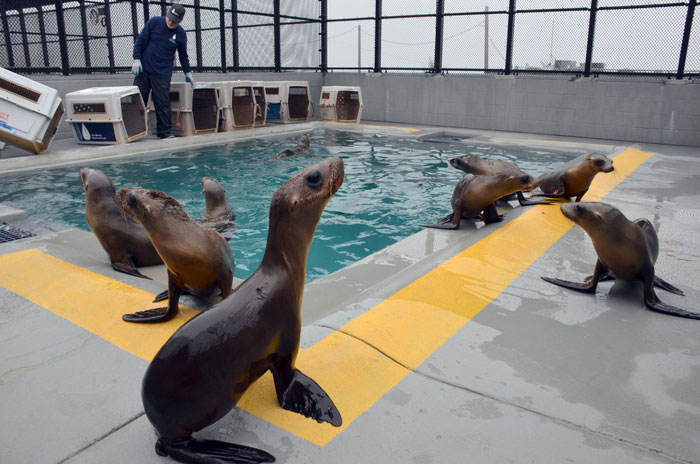
By mid-July the traffic had calmed down to 56 patients. A sea lion flopped unwillingly from one pen to another, guided by two volunteers holding giant wooden boards that look like shields. Other pinnipeds basked in the sun or took occasional dips in the pools in their pens, which look like built-in Jacuzzis extending toward the coast. The veterinary facilities also feature X-ray machines, ultrasounds, surgical equipment, and even giant blenders for food preparation.
“Our hospital is very similar to what you would experience in a human hospital,” Simeone said.
TMMC’s full-time staff includes four full-time veterinarians, an intern veterinarian and several part-time vets. The center also serves as a teaching hospital where foreign exchange veterinarian students train for three-month periods. With ocean temperatures remaining high — it was 67 degrees in Monterey Bay on August 12 — and a strong El Niño forecast to keep them high through at least early next year, there likely won’t be a slowdown next year, either.
California’s coastal upwelling, which supports the fish that feed the sea lions and other marine mammals, has stalled, and the fish have headed farther north or out to sea to chase cooler water. Sea lion mothers have been forced to go farther in search of food, abandoning or losing their pups because they weren’t able to provide them the nutrition that they needed.
In previous El Niño years, the center has seen similarly large numbers of starving animals – in 2009, with a moderate El Niño, the center had 1,643 admits in one year, and in 1998, during one of the strongest El Niños ever recorded, 1,130 marine mammals were admitted. But the degree of the warming in the last year has been unprecedented – much of it took place last fall, before an El Niño had even been declared.
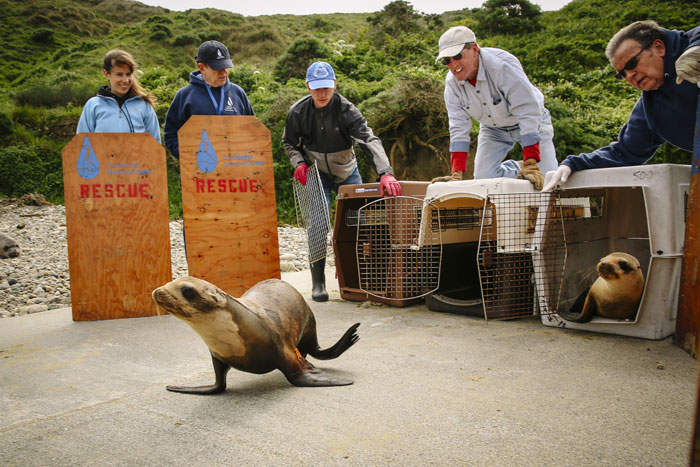
Despite the bad year, though, the California sea lion population is thriving overall, with more than 300,000 sea lions living along the West Coast. Saving starving pups, Simeone said, doesn’t necessarily make much of a big-picture difference for the species itself, but it offers valuable lessons about sea lion conservation. TMMC collaborates with more than 30 institutions around the world and hosts a variety of ongoing research projects. Though El Niño and climate change are part of a larger phenomenon, by studying the animals that are stranded along the coast, the center seeks to better understand the localized effects on our ocean environment.
It’s difficult to predict what the next year will look like for the California sea lions, though NOAA models say there’s a greater than 90 percent chance that El Niño will continue into 2016. “For the sake of the animals, we are always hopeful that we will not have a busy year,” Simeone said. “But given what we’ve seen with the California sea lions over the past few years as well as our previous experience with El Niño conditions, we are preparing for another busy year.”


